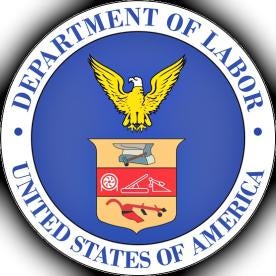Over the weekend, the United States Department of Labor issued an additional set of FAQs on the Families First Coronavirus Response Act (FFCRA). The FAQs provide valuable guidance on the interpretation of the FFCRA and should be reviewed by anyone charged with administering the benefits which will be available on April 1, 2020. Here are some highlights of the additional guidance provided by the most recent set of coronavirus FAQs.
Paid Sick and Family Leave
Paid sick and/or family leave is available under the FFCRA if an employee is unable to work or telework because their son or daughter’s school or place of care has been closed because of the coronavirus. Under the FFCRA, a “son or daughter” is an employee’s own child, which includes a biological, adopted, or foster child, stepchild, a legal ward, or a child for whom the employee is standing in loco parentis—someone with day-to-day responsibilities to care for or financially support a child. In addition,
a “son or daughter” is also an adult son or daughter (i.e., one who is 18 years of age or older), who (1) has a mental or physical disability, and (2) is incapable of self-care because of that disability.
Coronavirus FAQs
The FAQs also address the right of an employee to be restored to their position after taking leave provided by the FFCRA, which generally requires employers to provide the same (or a nearly equivalent) job to an employee who returns to work following leave. In most instances, employees are entitled to be restored to the same or an equivalent position upon return from paid sick leave or expanded family and medical leave. Thus, an employer is prohibited from firing, disciplining, or otherwise discriminating against employees because they take paid sick leave or expanded family and medical leave. Nor can an employer fire, discipline, or otherwise discriminate against employees because they have filed any type of complaint or proceeding relating to these Acts, or have or intend to testify in any such proceeding.
The FAQs also emphasize, however, that employees are not protected from employment actions, such as layoffs, that would have affected these employees regardless of whether they took leave. This means an employer can lay off employees for legitimate business reasons, such as the closure of a worksite. The employer must then be able to demonstrate that the employee would have been laid off even if the employee had not taken leave.
Family Medical Leave Act
Another significant point addressed in the most recent set of FAQs is how FFCRA paid leave is coordinated with other kinds of leave. As to paid sick leave, eligible employees are entitled to paid sick leave under the Emergency Paid Sick Leave Act regardless of how much leave they might have previously taken under other employer-provided policies or legally mandated leave laws, such as prior leave that under the FMLA.
However, if an employer was covered by the FMLA prior to April 1, 2020, an employee’s eligibility for expanded family and medical leave depends on how much leave the employee has already taken during the 12-month period that the employer uses for FMLA leave. Employees may take a total of twelve workweeks for FMLA or expanded family and medical leave reasons during a 12-month period. If an employee has taken some, but not all, twelve workweeks of their leave under FMLA during the current 12-month period determined by their employer, the employee may only take the remaining portion of leave available. If the employee has already taken twelve workweeks of FMLA leave during this 12-month period, they may not take additional expanded family and medical leave.




 i
i


